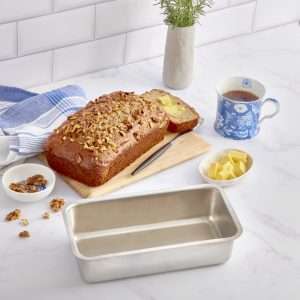What do the different stainless steel grades and numbers mean? Stainless Steel Grades Simplified: Understanding 18/0 & 18/8
When it comes to choosing the best material for food preparation, tableware and food storage, stainless steel is a solid choice. It is sustainable, durable, affordable, corrosion resistant, recyclable at its end of life and easy to clean. However, there are many different grades used for a range of different purposes, of which have different benefits.
Two popular grades that often come up in kitchenware and food-related equipment are 18/0 and 18/8. These are the low grades which we carry at The Low Tox Project Shop.
As there are hundreds of different types of stainless steel, the stainless steel rabbit hole can be an overwhelming place, so let’s break it down in an easy-to-understand way. We'll focus on the 2 most common grades for food.
What Does “18/0” and “18/8” Mean?
Metal alloy has a range of different components that make up its composition, determining its strength, durability, and resistance to corrosion.
The numbers in stainless steel grades represent the percentage of chromium and nickel in the metal (the 2 main components of stainless steel). In this case, the number in front (18) represents the chromium content, and the second number (0 or 8) represents the nickel content.
Chromium is a key element that gives stainless steel its resistance to rust and shiny appearance. Nickel enhances corrosion resistance and adds strength to the metal, while also giving it a smoother, more polished finish.
So, 18/0 stainless steel contains 18% chromium and 0% nickel.
18/8 stainless steel contains 18% chromium and 8% nickel.

What are the differences?
18/0 stainless steel is a practical, budget-friendly option for many kitchen essentials. With 18% chromium, it offers solid protection against corrosion, making it a reliable choice for everyday items. The lack of nickel makes it more affordable, and it is great for those with nickel allergies or sensitivities. It's also easy to manufacture with giving flexibility in the choice of products that can be made from it.
18/8 is the most commonly used grade in kitchenware products. It is high performing and extremely durable, while also having great resistance to rust and corrosion. The addition of nickel does make 18/8 more expensive than 18/0, although it offers additional resistance to corrosion as well as a shinier, more polished finish.
You may also find 18/10 common in kitchens items particular saucepans and cutlery that are faced with long use and more corrosive environments.
Does Nickel Matter?
Nickel boosts the metal’s resistance to corrosion, especially against food acids and moisture, which can take a toll over time. It also adds strength and flexibility, and gives the metal a beautiful shiny, polished look. Because of this, 18/8 stainless steel is more resistant to corrosion, rust and staining than 18/0. However 18/0 is still an excellent choice in a stainless steel item, giving the user a slightly different option depending on their needs.
Why are some products made with 18/0 and others with 18/8?
The grade of stainless steel utilised depends on a range of factors, such as performance needs and intended use, as well as manufacturing capabilities.
So how do I choose what is best for me?
Choosing your stainless steel grade will largely depend on how you intend to use it.
If you have allergies or sensitivities to nickel, or if you are looking for a more budget-friendly option, 18/0 stainless steel is a great choice. It has good corrosion resistance from the 18% chromium content, however it is not as resistant as 18/8.
If you are after something with additional resistance to corrosion, rust and staining, or if you want something that is shinier and looks more polished, 18/8 is a brilliant option. 18/8 holds up better in environments where it is exposed to moisture or food acids.
Why do we offer both grades?
In some items we offer both grades to allow our customers choice. In other items we manufacturer in the grade that is available and most suited to the shape and form for manufacturing reasons. Both are excellent choices and still recognised as "food grade stainless steel" You should feel comfortable with selecting either garde for your home use.
Still unsure? Please reach out and chat to us further


